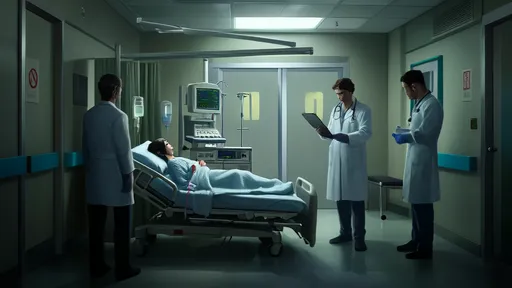The dream of perfect vision without glasses or contact lenses has lured millions into laser eye surgery clinics worldwide. For many, the promise of waking up with 20/20 vision feels nothing short of miraculous. Yet behind the glossy advertisements and celebrity endorsements lies a complex medical procedure with permanent consequences—both good and bad—that patients often discover only after it's too late to turn back.
The Allure of Freedom
There's no denying the life-changing potential of refractive surgeries like LASIK, PRK, and SMILE. Imagine swimming without goggles, waking up to a clear world, or simply no longer fumbling with fogged-up masks during flu season. These procedures reshape the cornea using precise lasers, correcting how light enters the eye. Success rates are high—about 96% of LASIK patients achieve 20/20 vision or better initially. The convenience factor drives the industry's $2 billion annual revenue, with clinics often downplaying risks during consultations.
The Hidden Trade-offs
Beneath the surface of these statistics lurk complications rarely discussed in pre-op brochures. Dry eyes plague nearly half of patients long-term, sometimes requiring expensive eye drops indefinitely. Night vision disturbances—halos, starbursts around lights—alter the driving experience permanently for about 20% of recipients. Then there are the nightmare scenarios: corneal ectasia (a bulging of weakened eye tissue), chronic pain syndromes, or vision that deteriorates unpredictably years later. Unlike glasses, these aren't problems one can simply take off at night.
The Age Factor
Marketing targets young adults, yet their eyes continue changing. Many twenty-somethings require "enhancement surgeries" by their thirties as prescriptions drift. Worse still, laser procedures complicate future cataract surgeries—an inevitability for most seniors. The corneal alterations make calculating artificial lens strength trickier, potentially compromising golden-year vision. Some ophthalmologists privately admit they'd never operate on their own children, knowing how decades of data remain incomplete.
Alternative Realities
Not all refractive errors suit laser correction. Thin corneas or extreme prescriptions may disqualify candidates—though some clinics stretch guidelines for profit. Orthokeratology (overnight vision-correcting lenses) and implantable collamer lenses (ICLs) offer reversible options, yet carry their own risks like cataracts or corneal infections. The hardest truth? No solution beats nature's original design; all interventions exchange one set of problems for another.
The Psychological Toll
Regret manifests uniquely in vision surgery patients. Unlike other medical procedures, this elective operation alters a fundamental sense—sight. Online support groups overflow with "post-LASIK depression" stories: patients mourning their former (albeit corrected) vision quality, battling disbelief from doctors who dismiss their complaints as rare outliers. The very permanence that makes success wonderful renders complications devastating.
A Question of Consent
Informed consent remains medicine's ethical cornerstone, yet time-strapped consultations often gloss over nuanced risks. FDA reports reveal most patients recall discussing benefits far more than potential complications. Surgical consent forms bury critical details in legal jargon—like the fact that results can't be guaranteed, or that future technologies might better address their condition. The rise of corporate-owned laser centers prioritizing volume over care exacerbates this issue.
The Financial Mirage
Upfront costs—typically $2,000-$4,000 per eye—represent just the beginning. Many insurers classify these as cosmetic procedures, leaving patients fully liable. When enhancements or complication management arise, expenses snowball. Dry eye therapies alone can cost $1,000 annually indefinitely. Contrast this with a lifetime supply of high-end glasses and contacts rarely exceeding surgery's initial price tag.
Generation Lens
Modern lenses offer solutions laser surgery can't match—blue light filtering, transition capabilities, even adjustable focus. Meanwhile, laser technology hasn't fundamentally evolved since the 1990s; refinements address precision rather than overcoming inherent biological trade-offs. Ironically, many surgeons still wear glasses themselves—a quiet testament to their understanding of the procedure's limitations.
The Verdict
Refractive surgery delivers miracles for some and misery for others. The decision hinges on individual risk tolerance, lifestyle needs, and psychological preparedness for potential complications. One truth emerges clearly: this isn't simply about trading glasses for freedom—it's a permanent bargain with one's biology that deserves months of research, not just a glossy brochure and a Groupon coupon. In vision as in life, there are no perfect solutions—only carefully chosen compromises.

By /Jun 7, 2025

By /Jun 7, 2025

By /Jun 7, 2025

By /Jun 7, 2025

By /Jun 7, 2025

By /Jun 7, 2025

By /Jun 7, 2025

By /Jun 7, 2025

By /Jun 7, 2025

By /Jun 7, 2025

By /Jun 7, 2025

By /Jun 7, 2025

By /Jun 7, 2025

By /Jun 7, 2025

By /Jun 7, 2025

By /Jun 7, 2025

By /Jun 7, 2025

By /Jun 7, 2025

By /Jun 7, 2025

By /Jun 7, 2025